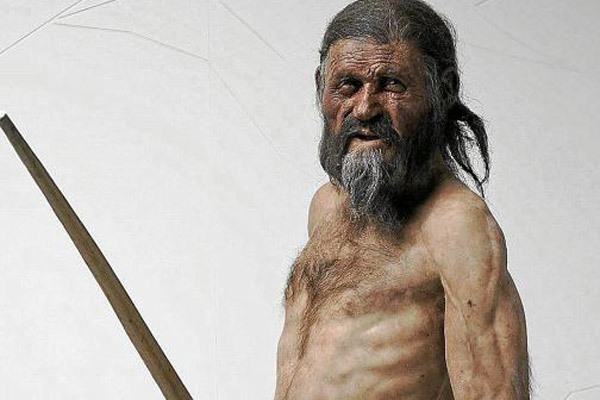- Cine.Ötzi, the ice man: epic of the ancestors
- Genetics identify 19 living relatives of Ötzi
The spectacular discovery, in September 1991, of Ötzi, the perfectly preserved mummy of a 5,300-year-old human, now joins an unexpected discovery about the vegetation that surrounded the death of the iceman.
The study of the plants has allowed to recreate the route that Ötzi took in the Alps, where he died, and to establish that the landscape of the area has changed very little since then. Now we know more precisely what were the last roads he traveled and in what kind of environment he found death.
Scientists, led by James Dickson of the University of Glasgow, have analyzed thousands of fragments of 75 different species of mosses and liver plants buried next to the mummy. Like it, they have been preserved for millennia in a state of freezing, which has now allowed their study.
The research, published in the journal Plos One , has determined that only 30% of the plants were local species. The rest came there because Ötzi ate them, or stained their clothes, or ingested other mammals that ended up next to the iceman, 3,200 meters from sea level in the Italian Alps.
"Mosses are crucial in determining the events of the last two days of the iceman. Especially, but not only, the small residues of various species recovered from the food tract," Dickson explained to THE WORLD.
Today there are only 23 species of bryophytes (the referred mosses and liverworts) in the place where Ótzi died, while the others that have recovered grow in the Senal Valley, where the hunter had to pass in his fatal alpine climb.
Never before has this class of plants been found at such an altitude and preserved by freezing over thousands of years. But, apart from the botanical treasure that this represents for the experts, Dickson emphasizes the importance of being able to deduce environmental and climatic aspects, besides that we now have a map and a diary of his last days alive.
The researchers concluded that "in the immediate area around the site where the body was found 5,300 years ago, the vegetation has seemed to have changed little or nothing," says Dickson. "Maybe now it's a little wetter," he says.
The fact that the bryophyte plant species has not undergone notable variations since the Ötzi times is what has allowed it to reproduce its last steps, by contrasting the plants that it carried with it and those that still grow today in other valleys and hillsides.
That is to say, Ötzi was staining and ingesting species that now draw the paths he traveled like the Thumbello crumbs in the popular story.
In this way, "a small sample of Aulacomnium moss, found right next to the body, indicates that it was in the area of Bolzano, between 1,600 and 2,000 meters high, before its last climb up to 3,210 meters."
There, in the Ötztal mountain range, from which his mummy takes its name, he lost his life and his body was frozen for posterity.
According to the criteria of The Trust Project
Know more- science
- Science and Health
Science At least four Iberian lynxes killed by shotgun shots and traps of the poachers in Castilla-La Mancha
HistoriasMar Menor: from Mediterranean paradise to animal cemetery
AmbienteMatt McGrath of the BBC, awarded by the FBBVA for informing and "inspiring" about the challenges of the planet

